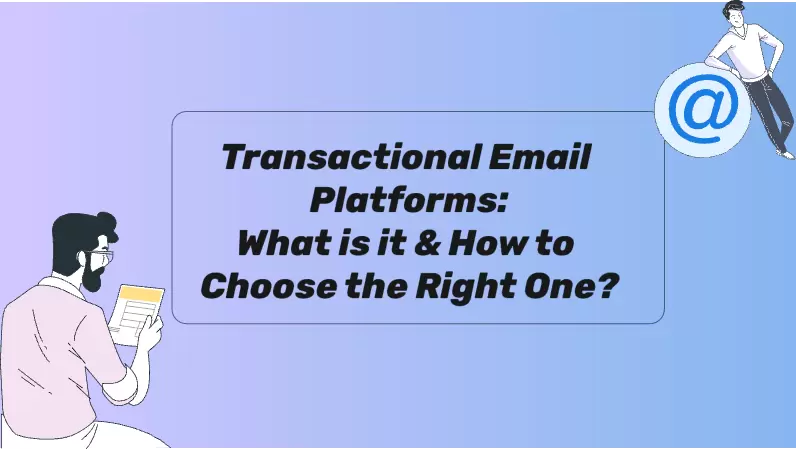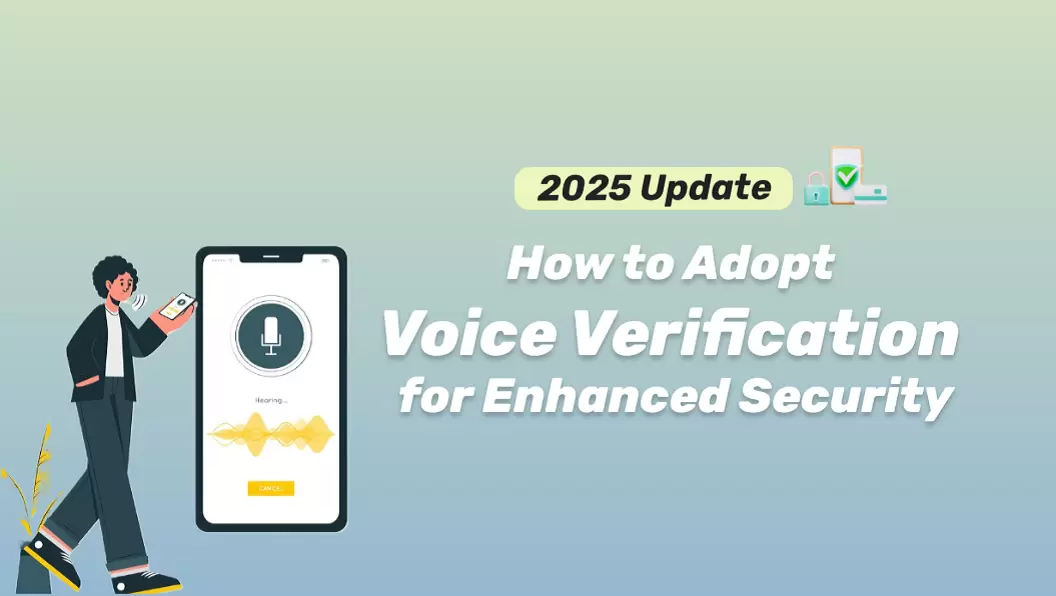There is no denying that authentication has become one of the most critical aspects when it comes to safeguarding user data. As a respectable business, you need to ensure that accessing your application or platform is safe, without users compromising their sensitive data.
To address these potential cyberattacks, more and more companies have started adopting passwordless authentication techniques, such as One-Time Passwords (OTPs) and Magic Links. With these tools being so effective, future trends show that they will become even more prominent. In this article, we are shifting our focus to passwordless authentication methods, and more specifically explaining what are magic links.
How Do Magic Links Work?
 But what are magic links?
But what are magic links?
This passwordless authentication method uses a unique URL, called the magic link, that the user receives in their email. This practically means that when a company wants to authenticate your identity, they will send you this link to your email address.

When you click on it, you automatically confirm your identity. Furthermore, it is important to note that the magic link is time-sensitive, which means that it will expire if you don’t click on it in a few minutes or in a predetermined amount of time.
The following question is How do magic links work. In more detail, the process of using a URL like this requires the following steps:
- Go to the app or platform you wish to sign in to and type your email address.
- The system will inform you that you have received an email to confirm your identity.
- Go to your email provider and find the magic link. If the link has expired, you can always request a new one.
- The server verifies the token embedded in the URL and authenticates your identity.
- Log in to the app or platform with your confirmed account.
Pros and Cons of Magic Links
However, this analysis would be incomplete without mentioning the pros and cons of magic links. When selecting the right authentication method for your company, it is important to consider both the benefits and risks of using it.
Pros
-
Ease of Use: This is a passwordless authentication method, meaning that users don’t need to remember any passwords.
-
User Experience: The process is rather simple and intuitive, even for non-tech-savvy users.
-
Security: the URLs are unique and time-sensitive, and so, they can’t be reused and exploited.
Cons
-
Email Dependency: The users need to have access to their inbox to use the magic links.
-
Delivery Delays: in some cases, the email might be delivered late. This can cause frustration to users that need to gain access to the platform.
-
Phishing Risks: hackers often impersonate a company sending a magic link to its users, and thus obtaining their sensitive data through this fraudulent link.
How One-Time Password (OTP) Works
Having explained what magic links are, we should now move on to the other popular passwordless authentication method. OTPs are temporary codes sent to users via SMS, email, or messaging apps like WhatsApp. These codes are valid for a single session and often expire within a few minutes. Therefore, whenever you want to access a platform that uses a one-time password, you will have to type the unique passcode you receive. If the code is correct, then you will be able to log in and use the service.

To explain it better, here is how OTPs work through some simple steps:
- The user tries to log in to a platform and types either their phone number or email address.
- The company will generate a unique, time-sensitive code.
- The passcode is automatically sent via SMS, email, or messaging app, depending on what the company has implemented.
- The user must then type the OTP on the application or platform screen.
- The server validates the code and grants access.
Pros and Cons of OTPs
Just like magic links, OTPs also have benefits and drawbacks. For this reason, it is important to keep them in mind before deciding to commit to this authentication method.
| Pros | Cons |
|---|---|
| Security: OTPs are extremely difficult to intercept. | User Friction: This method requires an additional step, especially if the user tries to log in to a platform on a computer and receives an OTP via SMS. |
| Time-Sensitive: The passcodes expire quickly, even in a couple of minutes. Of course, users can request a new OTP if their code has already expired. | Delivery Failures: On rare occasions, SMS and emails might get delayed, go to spam, or get blocked. |
| Channel Flexibility: This method is very convenient as you can use it in multiple methods, such as SMS, email, and messaging apps. | SIM Swapping Risks: When it comes to SMS OTPs, there is the risk of SIM hijacking. |
| Widely Used: Nowadays, most users have already encountered an OTP, thus knowing how to use it without confusion. | / |
| Numerous Applications: OTPs have found usage across numerous industries, even those that require extra levels of data protection. | / |
OTP vs. Magic Links Comparative Analysis
While both of these methods serve the purpose of providing passwordless authentication, they work in significantly different ways. As we’ve seen how magic links work, you understand that they are a user-friendly tool that works with just one click. On the other hand, an OTP requires the extra step of going to another device.
In addition to this, a magic link depends heavily on email systems, which are often slower and more vulnerable to phishing attacks. In contrast, OTPs are one of the most secure methods you can utilize, especially if you are sending them via SMS. Plus, they are super versatile as they can be distributed through various channels to adapt to your audience’s needs.
To make things clearer for you, we have summarized this comparison in a table:
| Feature | OTP | Magic Links |
|---|---|---|
| Usability | Medium (input required) | High (click-based) |
| Security | High (short-lived, dynamic) | Medium (email spoofing risk) |
| Delivery Channel | SMS, Email, Messaging App | Email-only |
| Time Sensitivity | Yes (typically 5 mins or less) | Yes (link expiration) |
| User Dependency | Phone/Email access | Email access |
| Setup Complexity | Moderate | Low |
| Enterprise Suitability | High | Medium |
✨Industry Trends & Best Practices✨
Both of these authentication methods have multiple use cases. To determine which one would be more suitable for your company, we will dedicate this part to the various applications of each.

Magic Links Applicable Industries & Platforms
- Media & Content Platforms: many media platforms focus on users reading the content. In these cases, they don’t need to log in frequently, and so, magic links are the perfect solution.
- E-commerce Guest Checkout: Many e-shops offer the option of completing the purchase as a guest. Magic link can verify the identity of the one-time user.
- Startups: when a company is just starting up, the budget is limited. In this instance, this authentication method provides a quick and cost-effective method of securing user data.
OTP Applicable Industries & Platforms
- Banking & Finance: Since OTPs are among the secure authentication methods, they are often utilized in multi-factor authentication. The banking and finance industries use OTPs to protect their users’ sensitive data.
- Healthcare: This is yet another industry that handles extremely sensitive user data, thus making OTP an essential authentication method.
- Enterprise SaaS: enterprises handle sensitive corporate data. For this reason, many have implemented one-time passwords.
Why OTP is Recommended Over Magic Links for Enterprise Users
For enterprise environments, security and scalability are critical. OTPs offer not only higher adaptability across devices but also more robust protection mechanisms. A one-time passcode adds a much-needed additional authentication layer that protects the company’s data. Magic Links, while user-friendly, might be the cause of data breaches that can be catastrophic for an enterprise.
Secure, Efficient, Intelligent – EngageLab: The Solution of Choice for Enterprises
EngageLab OTP: Dynamic Authentication Solution for the Enterprise
EngageLab’s OTP solution delivers enterprise-grade authentication, suitable even for businesses that require a high level of security. This versatile, easy-to-implement, and easy-to-use tool brings the best solution that companies that want a cost-effective and user-friendly tool, without sacrificing the security of their data.

In more detail, EngageLab’s OTP offers you:
- Integration with various channels, including WhatsApp, SMS, voice, and email.
- Supports automatic resending to ensure that your users receive an active code.
- Multi-language support makes it ideal for enterprises with a global presence.
- Numerous customization options, including premade templates and changing the length of the OTP.
- Detailed analytics and visual reports to analyze user behavior and improve your strategies.
EngageLab Push Messaging: Reach Your Users in Real Time
Beyond OTPs, EngageLab offers push notification solutions for both the web and apps. If you need to reach your audience in real-time, these tools are perfect for your company. EngageLab allows you to set up triggers for your push notifications, based on user behavior and characteristics. This way, you ensure that you are sending the right message at the right time without delays.

🎉Related reading🎉
Continue studying authentication and protecting your business data security through these topics:
In Conclusion
As a business in the modern landscape, you need to know how do magic links work, as well as the other available authentication methods. However, if you are handling important data, OTP is the securest solution for your enterprise. EngageLab offers you an OTP service that is easy to implement, versatile, and highly scalable. Sign up for EngageLab today and gain a strategic advantage for your company!







